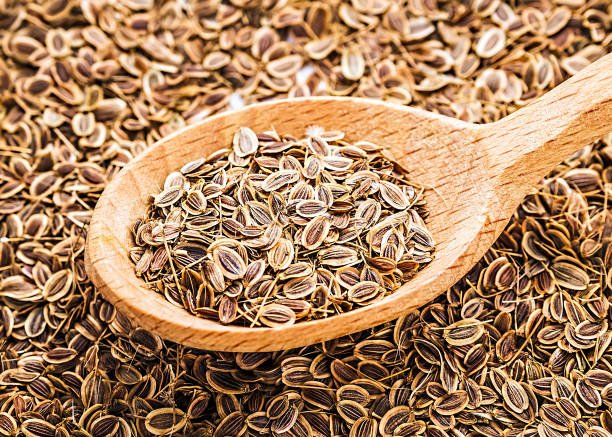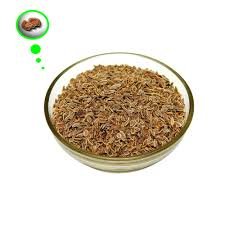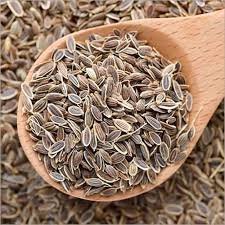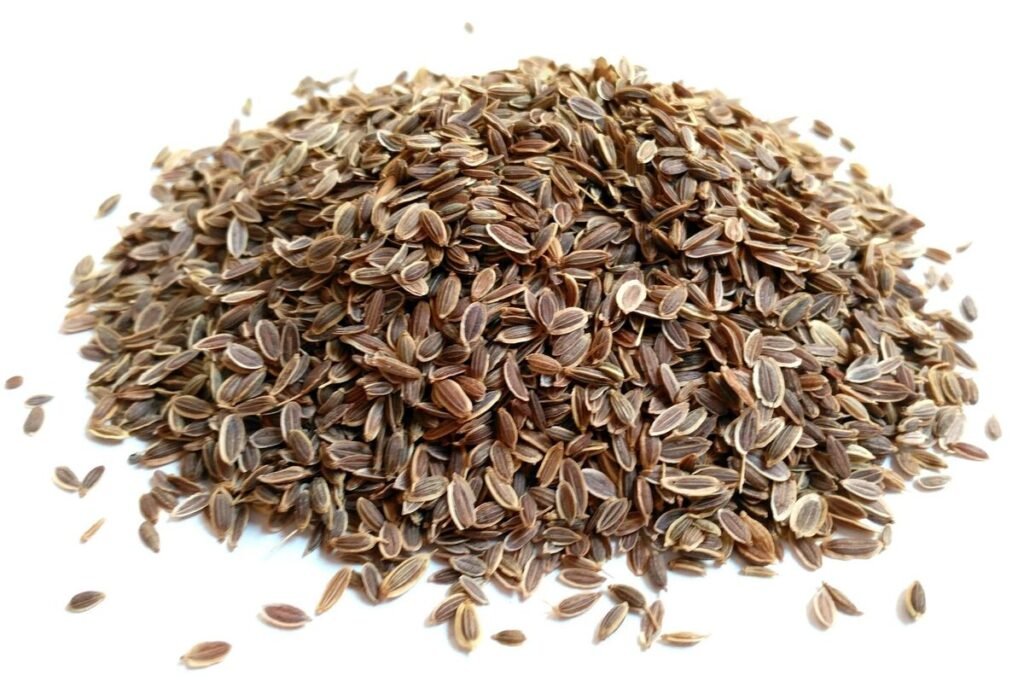Dill Seeds
Dill seeds are the dried fruits of the dill plant (Anethum graveolens). They have a distinct, aromatic flavor that is slightly bitter and reminiscent of anise with subtle citrus hints. Commonly used in pickling, brining, and seasoning, they are an essential spice in many Eastern European, Scandinavian, and Middle Eastern dishes. In addition to their culinary uses, dill seeds have been traditionally valued for their digestive properties, helping to alleviate bloating and indigestion.
Physical Characteristics (Brief Overview):
Size and Shape: Small and oval.
Color: Light yellow to light brown.
Texture: Hard with a slightly wrinkled surface.
Aroma: Strong, aromatic with a slightly bitter, citrus-like note.
Essential Oils: Contain compounds such as carvone, limonene, and dill ether, which contribute to their distinct aroma and flavor.
Phenolic Compounds: Include various flavonoids and phenolics that provide antioxidant properties.
Nutritional Components: Trace amounts of fatty acids, vitamins, and minerals are also present.
Quality Standards for Exporting Dill Seeds
Nutritional Information (per 100 grams):
Calories: Approximately 305 kcal
Protein: 15.0 g
Fat: 10.5 g
Saturated Fat: 1.0 g
Unsaturated Fat: 9.5 g
Carbohydrates: 55.0 g
Dietary Fiber: 38.0 g
Sugars: 3.0 g
Vitamins:
Vitamin A: 0 IU
Vitamin C: 85 mg (about 142% of the daily value)
Vitamin K: 8.0 mcg
Folate: 150 mcg
Minerals:
Calcium: 1200 mg
Iron: 16.0 mg
Magnesium: 200 mg
Potassium:1000mg
Phosphorus:250g
Quality Standards :
“Compliant with local and European standards according to food safety regulations.”
Seeds should have a high purity level, free from foreign materials and other seed types.
Maintain moisture levels within the acceptable range (typically below 12%) to prevent spoilage and ensure seed longevity.
Must be free from pests, diseases, heavy metals, and pesticide residues, meeting both domestic and international safety standards.
Consistent size, shape, and color with minimal physical damage or deformation.
Use food-grade, moisture-proof packaging with clear labeling that includes origin, batch number, and certification details.
Obtain necessary certifications to verify that the seeds meet the import country’s agricultural and safety regulations.
The overall bacterial load should be below the regulatory threshold, often set at a maximum of 10⁴ CFU/g, though exact limits may vary by destination.
Seeds must test negative for harmful pathogens such as Salmonella spp. and Escherichia coli.
Coliform bacteria levels should be minimal, indicating proper sanitation and processing.
Fungi and yeast populations should be controlled to prevent spoilage and mycotoxin production.
Ensure that levels of mycotoxins (e.g., aflatoxins) remain below the internationally accepted safety limits.
These microbiological criteria are essential for ensuring that the exported dill seeds meet international food safety standards and are safe for consumption.
As per the customer’s request, polypropylene bags and cartons.”
Storage Standards:
Store seeds in a cool, dry environment with controlled humidity (typically below 60%) to prevent spoilage.
Maintain proper ventilation in storage areas to avoid condensation.
Keep storage facilities clean, pest-free, and regularly inspected to ensure quality retention.
Practice first-in, first-out (FIFO) inventory management to ensure older stock is used first and does not deteriorate.
Under optimal storage conditions—cool, dry, and airtight—dill seeds can typically maintain their quality for about 2 to 3 years. However, for the best flavor and potency, they are usually recommended to be used within 1 to 2 years.
Traceability and Compliance;
Origin :Egypt
Application:
1. Culinary Uses:
Dill seeds are commonly used as a spice in various dishes, particularly in pickling, soups, sauces, stews, and salads. They add a unique, aromatic flavor to food and are often used in spice blends.
2. Medicinal Uses:
Dill seeds have been traditionally used to aid digestion, relieve bloating, and reduce discomfort from indigestion. They are sometimes brewed into herbal teas or used in natural remedies.
3. Aromatherapy:
The essential oils extracted from dill seeds are used in aromatherapy for their calming effects, often incorporated into oils and diffusers.
4. Cosmetic Uses:
Dill seed oil is sometimes used in skincare products for its potential anti-inflammatory and antioxidant properties. It can help soothe skin irritation.
These diverse uses make dill seeds valuable both in cooking and for health-related applications.
Contact information:






